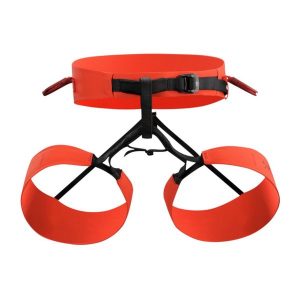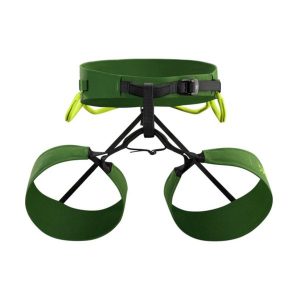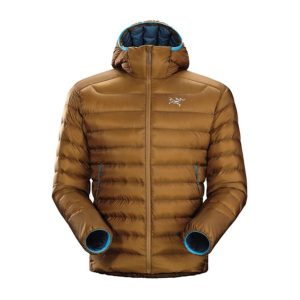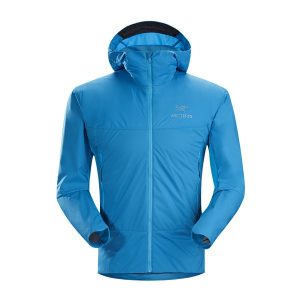What’s in Your Pack is a series where we speak with some of climbing’s leading athletes to learn about the gear that fuels their success. In this interview, I caught up with Jonathan Siegrist in Oliana, Spain where he tells us about the gear he relies on and his approach to working some of the hardest climbs in the world.
More commonly referred to by friends as J-Star, Jonathan has made the rocks of this planet a playground. Not only has he sent a modest 500+ 5.13s and a casual 220+ 5.14s, but he has also nabbed several of the world’s precious 5.15s. Simply put, J-Star shines among the highest echelon of sport climbing talent.
Aside from his performance abilities, what really distinguishes Jonathan is his contagious aura of stoke. Whether cruising the crags of the US with his dog Zeke out of the back of his Toyota Tundra or globetrotting between the epic cliffs of Europe, you can be sure he’s packing a smile and plenty of psych to share.
But of course, he’s bringing more than just that to the crag. Let’s take a look …
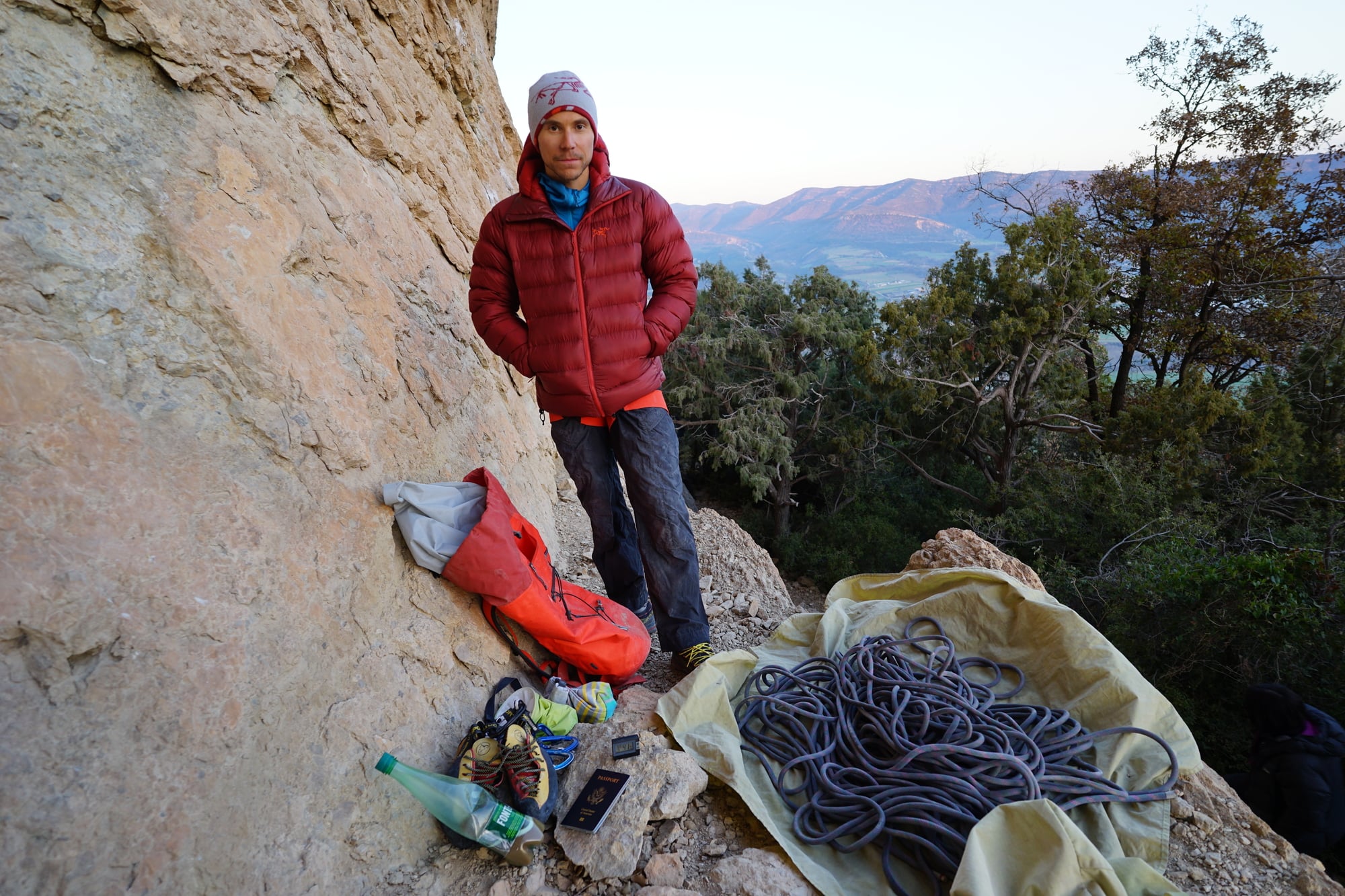
J-Star sharing the contents of his pack up at Oliana. All photos: Ryan Pace
Quick bites
- Nickname: J-Star
- Born: Madison, WI
- Current location: Organyà, Spain
- Years climbing: 13
- Education: Environmental Science at Naropa University
- Dirtbagging vehicle: Toyota Tundra
- Go-to crag snack: A piece of fruit and a bar
- Last book read: Lleida Climbs: A Guide to Lleida Area Sport Climbing
- Current song on repeat: Apocalipstick by Bufi
So we’re up here at Oliana—the hardest cliff in the world. Tell us about what you’re working on and what led you to choose this project.
I’m up here trying a Chris Sharma route called, Pachamama (9a+/5.15a), and I chose it because I’d always heard that it was quite difficult for the grade. I’ve climbed four routes of the same grade before and wanted to try something that felt like a 1/2 step up. As it turns out, it feels like a full step up for me.
I thought about trying it on my trip here last year when I did several other routes at the crag, but it has a boulder-y start and a no-hands rest that is the same for Papichulo, a route that I did last year, and I was so tired of doing the start, resting for 10 minutes, and then climbing that I couldn’t bear the idea of doing that again for another project.
I told myself then that maybe I’d be refreshed enough to come back this year to try it again, and so here I am.
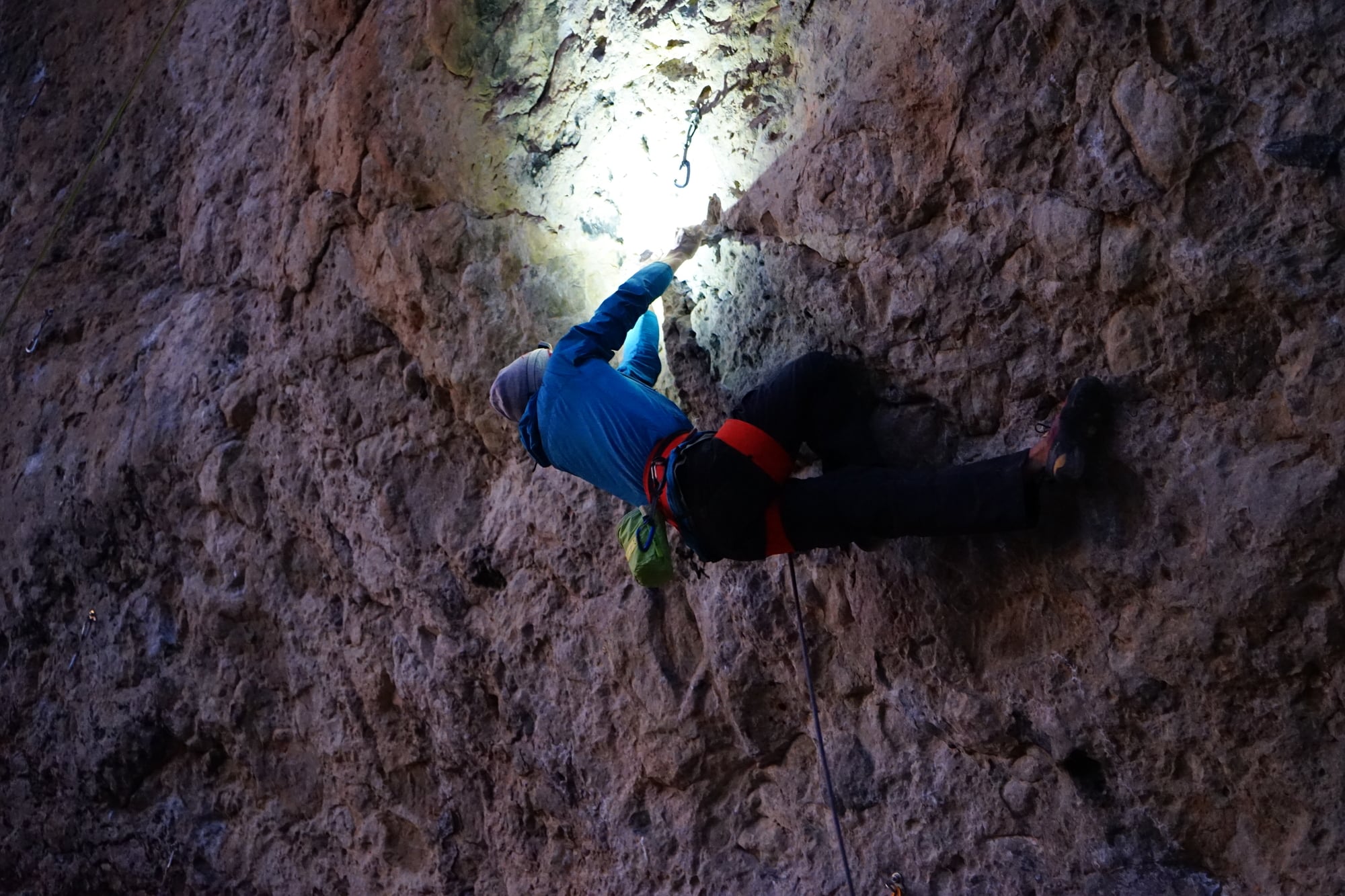
Jonathan taking a nighttime burn on Pachamama (9a+/5.15a).
What would you say are the biggest differences you’ve noticed in how the climbing culture in the US differs from here in Spain?
It’s quite different in my opinion, but one of the things I’ve noticed more than anything else is the sheer amount of difficulty here and that the climbing is relatively year round; right now it’s winter and I’m here climbing in shorts and no shirt in the sun.
Also, I think maybe because of that, the center of the community is at the cliff, whereas in the US, the basis and grounds for community-building seem to take place at the gym or a coffee shop. Even in major destinations, like Bishop or Boulder, you’re more likely to run into your friends somewhere indoors instead of actually out climbing, despite how many climbing options exist outside.
Here, you see all of the same characters at the cliff. People here go up to the cliff every single day. They just go up to the cliff whenever they have time off, even if it’s just for two hours. I think generally, that’s why people here are such good climbers. They’re always out here. They’re not in the gym trying a training program or something, they’re just up here, trying hard. Like really hard.
A look at Jonathan’s climbing life in Spain:
Could you talk about how you choose your projects? What factors shape your decision?
It’s somewhat based on seasonality. There’s not much in the world that I’d want to climb instead of this here in Oliana right now. It’s not even necessarily the best season for this crag, but this season is totally fine and I like being here.
Furthermore, my list of goals for my sport climbing is getting quite short; not for climbing in general, but for sport climbing, specifically. Climbing this route is definitely on that list, and now felt like a good time to try it. I didn’t even know if I’d necessarily be able to do it, but it felt like the right time to sample it.
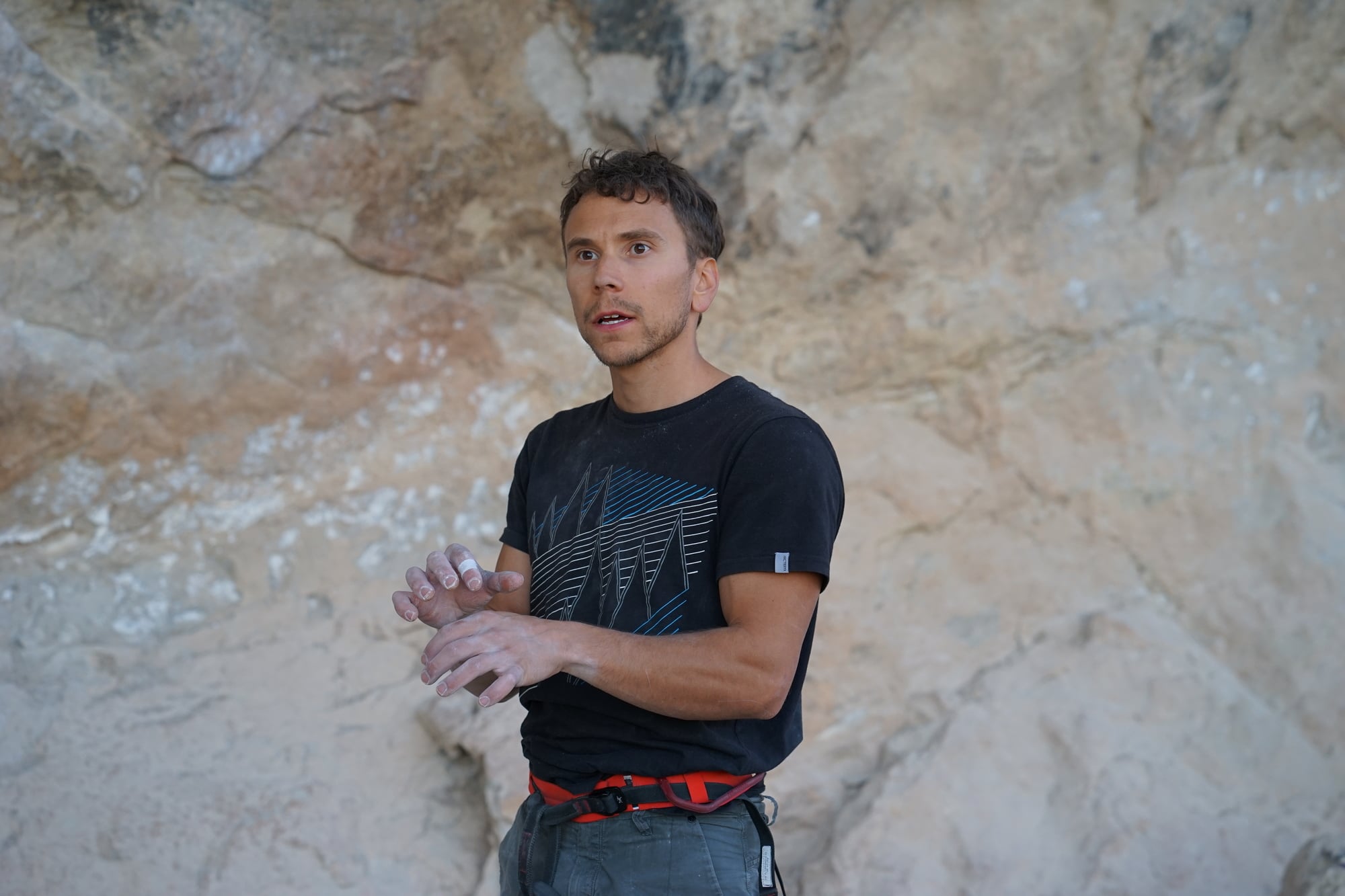
Jonathan discussing beta.
Looking up at your project, Pachamama can you tell us about the quickdraws you have hanging?
I use Metolius Bravo Quickdraws. They’re super lightweight and are still a full-featured quickdraw. They have a JIG on the rope side so the ‘biner never flips, and they’re just quite simple. The standout feature of this ‘draw is that 10 of these are the weight equivalent of like four of most brand’s quickdraws.
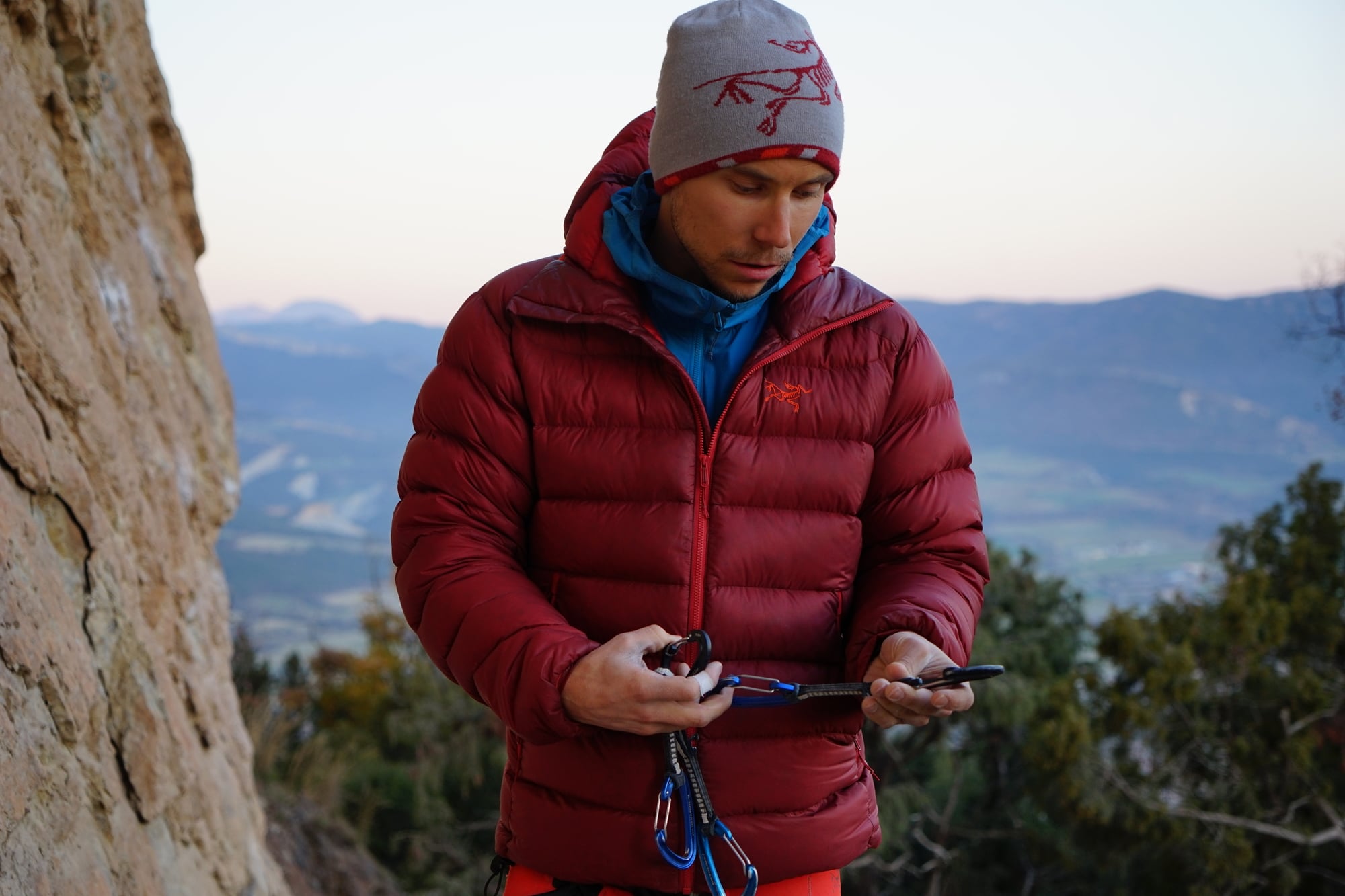
Showing off the Bravo Quickdraws.
They’re especially useful if you’re going for a hard onsite of a long—say 40-meter route—and are going to be strapped up with 16 or 18 ‘draws. I hate feeling the extra weight of gear on my harness, so I really like have something light like these. And, I can use Bravo Quickdraws for trad climbing, for climbing in the mountains on alpine routes, and here in Oliana for sport climbing. They work well for everything.
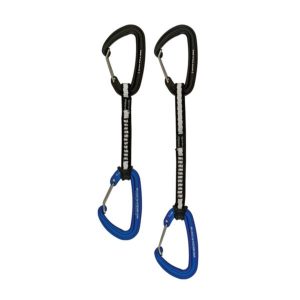
… And how do you rack your ‘draws on your harness? Gates in or gates out?
Gate out! I have strong, strong feelings for gate out. The other way is weird to me. It’s like the toilet paper coming out from against the wall. It needs to come over the top! There’s no benefit from under.
I totally agree on the gate out, but I’m on the other end for the TP debate … but fair enough. What is that sleek looking harness you’re wearing?
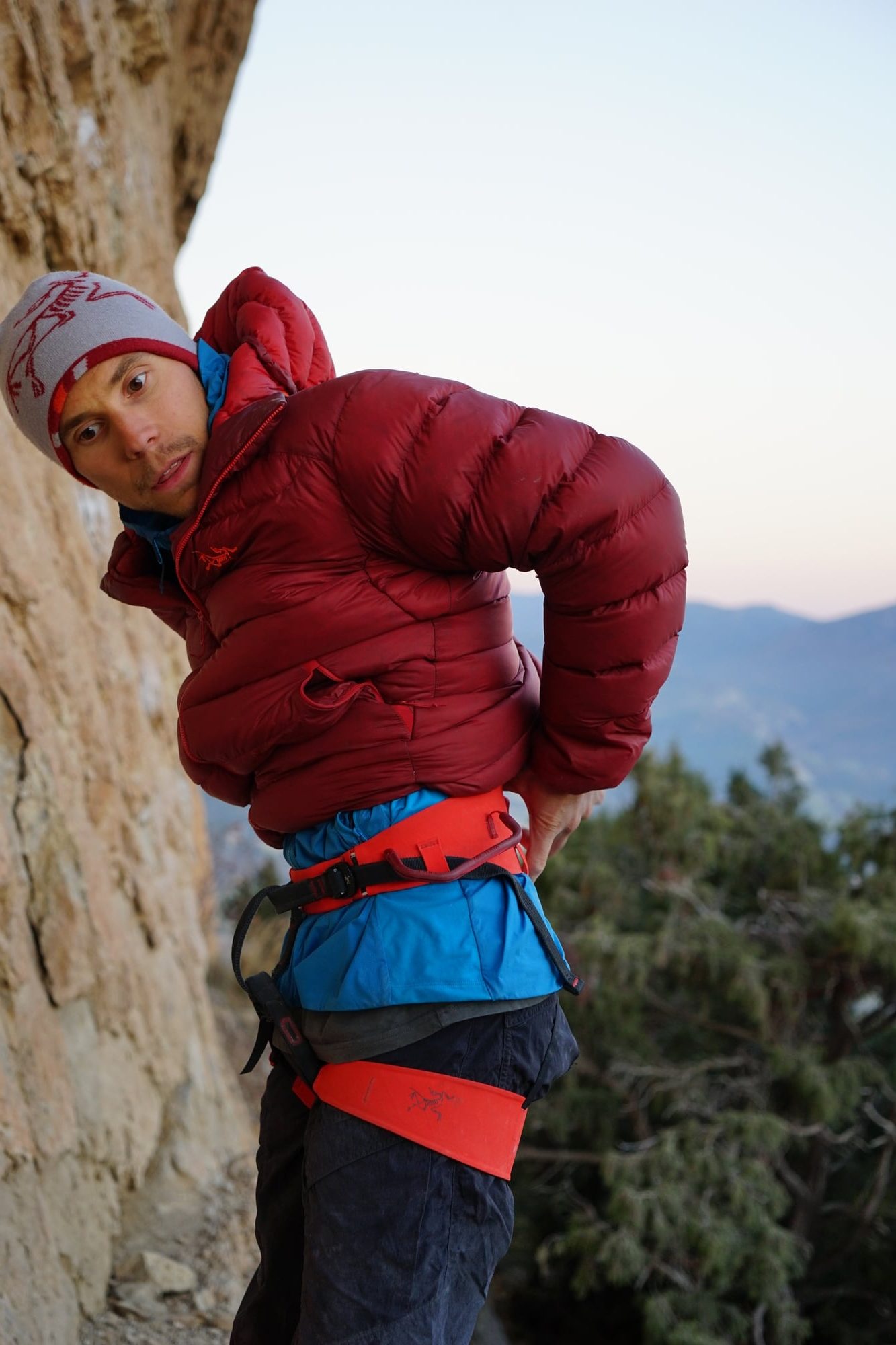
Pointing out the wide waistbelt of the Arc’teryx SL-340 harness.
I’m wearing the Arc’teryx SL-340 and I love it. It’s a little heavier than their older iteration of their superlight harness, but it’s considerably more comfortable. The swami (waistbelt) is quite a bit bigger than the old one and it has a really easy-to-access haul loop. The leg loops feature the same Warp Strength Technology they’ve been using for years, but now it’s used in the waistbelt and leg for the superlight version.
It fits me really well … and it looks cool as fuck!
I use this as my all-around harness, except I’ll use the FL-365—basically the same harness just with four gear loops instead of two—and I’ll use that on walls when I need more space to rack.
You mentioned that you care a lot about keeping things light. Can you tell us about the rope you’re using? I imagine that on a long, 50-meter route like this one, you’re dealing with a lot of rope drag.
This is the bi-pattern Maxim Airliner, 9.1.
This is actually the same rope I had with me for three months in Switzerland this summer and now a month of projecting here in Oliana … and it’s still kicking ass.
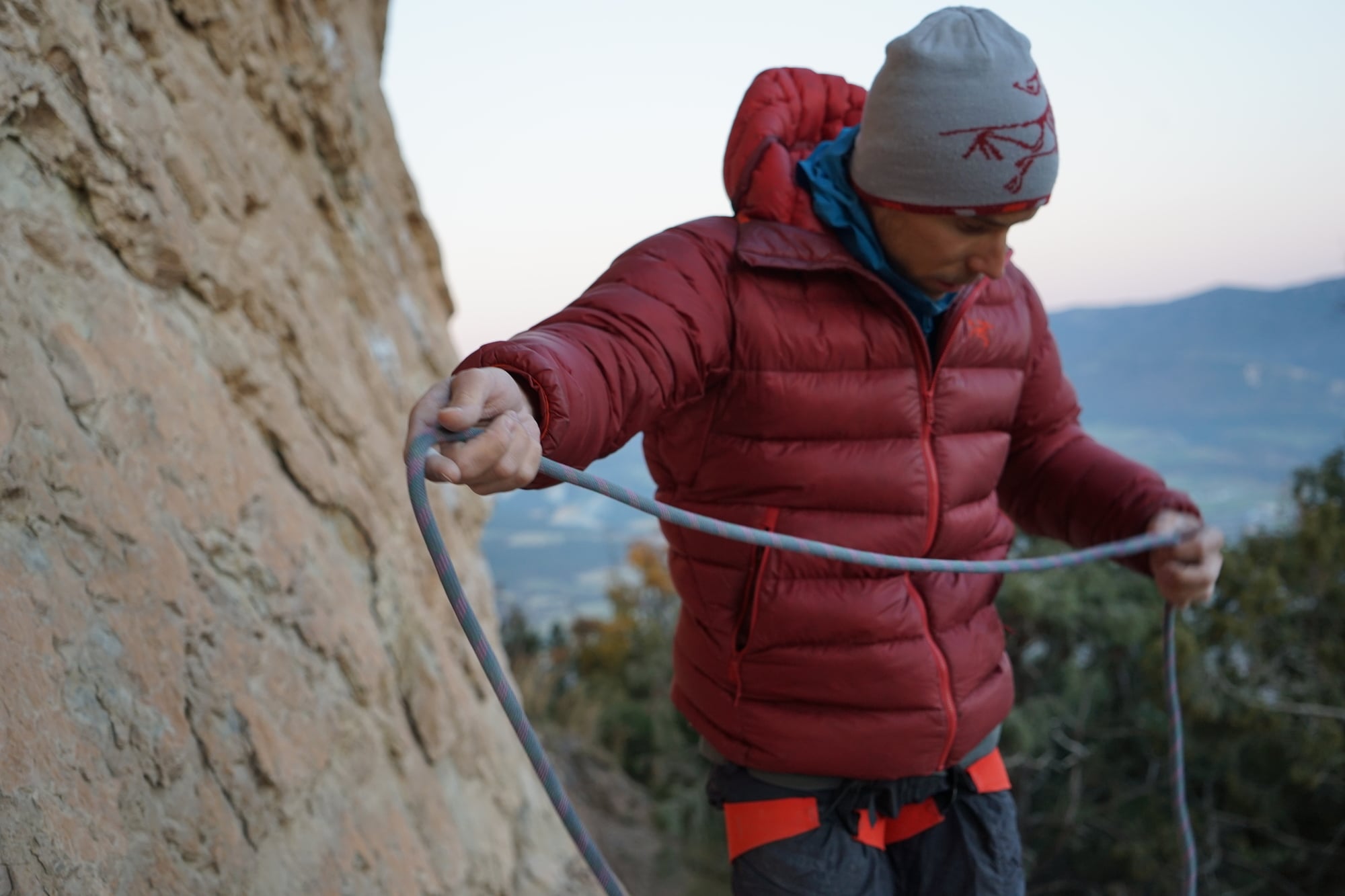
It’s the only rope model I’ve been using for probably five years now. It’s just awesome. It takes a beating! It might not be the lightest rope on the market, but it more than makes up for it in how durable it is.
When I come to Europe for three months, I want to bring just one rope and know that it’s going to make it through the entire trip. I know that sounds silly to people who might have a rope for three years, but when you’re out here taking massive whippers and hanging on the rope all day, and every two out of every three days you’re going to the death on your rope, three months can put a big burden on a rope.
I bring one cord to Europe, and it always lasts—no problem. It’s awesome.
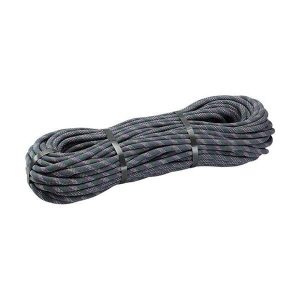
So do you have a fall range or some sort of indicators you follow before you’ll retire a rope? How do you decide when it’s time?
I think one of the best clues is checking the clipping point—this is usually where most ropes wear out—roughly two or three arm lengths from the end of the rope. This is why people tend to chop their ropes from that area, because most of the wear is usually at the ends, so you can get away with cutting off one or two meters.
Your sheath is what will wear out first. The core of the rope is going to be protected for the life of the rope, but as the sheath starts to wear, it can expose the core, which is when you get real issues.
One really easy way to check on the health of your rope is to bend the rope back on itself at a point of high wear. When the rope starts bending back and touching itself is when you have an indication of weakness. You know the sheath is starting to wear when you can easily push the rope into a sharp angle.
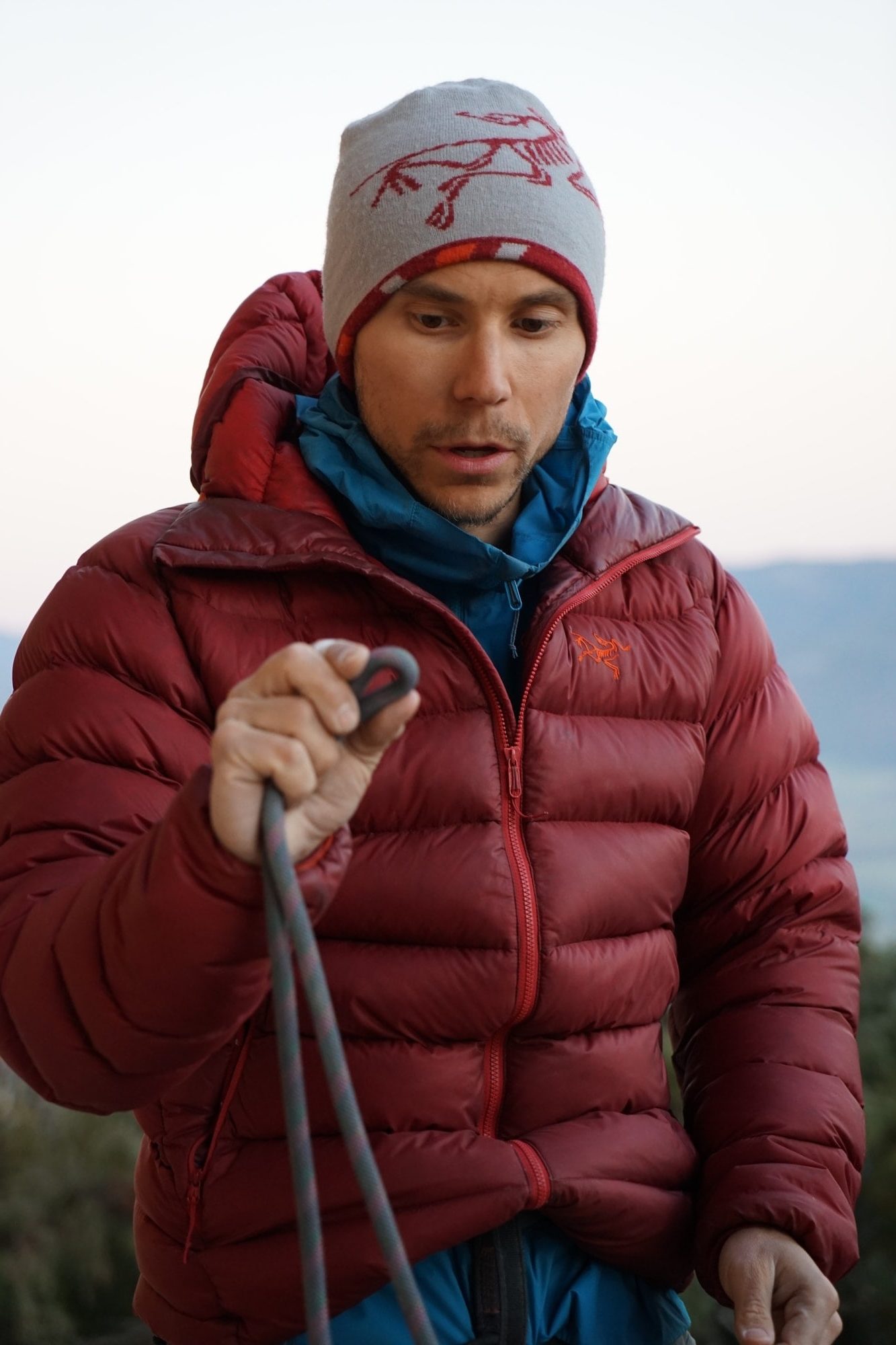
Another tip is just watching the rope. Generally, I don’t think you should have a rope for longer than three years, just given that nylon degrades in UV light and ropes get old. They’re a pretty important part of our kit as climbers. A good rope though, can handle a beating … that is for sure.
I see that you’re climbing in the Testarossas. Are these your go-to sport climbing shoe or are you using them for all styles of climbing?
Yeah, I wear the Testarossas for about 95% of everything I do. I just love ’em.
I’ve been wearing them pretty exclusively for three or four years. They fit my foot really well and I think they are just an overall really well-performing shoe. I like the way they heel hook and they’re pretty powerful for all kinds of different climbing.
The only other shoes I might reach for are; for wall climbing, the TC Pro, and occasionally when I’m bouldering, I’ll use the Solution or Squama, as bouldering can be quite toe hook-intensive. But for sport climbing, these have been perfect for me. I’ve done all of my 5.15s in these and probably 80% of my 5.14ds and harder I’ve all climbed in Testarossas, so they’re by far my favorite shoe.
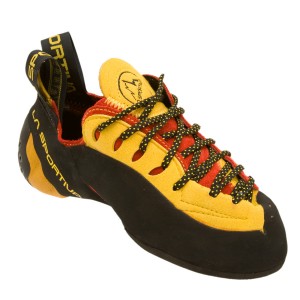
Let’s talk about some of these other things … Why do you bring your passport to the crag, and what is this timer-looking device?
The real reason I carry my passport is because I couldn’t find my car keys this morning and my passport was in my car and I didn’t want to leave it unlocked … And also, you never know when you’re going to need to leave the country! Actually, I bring the passport because if I send this route I’m going to leave here and drive straight to Monaco.
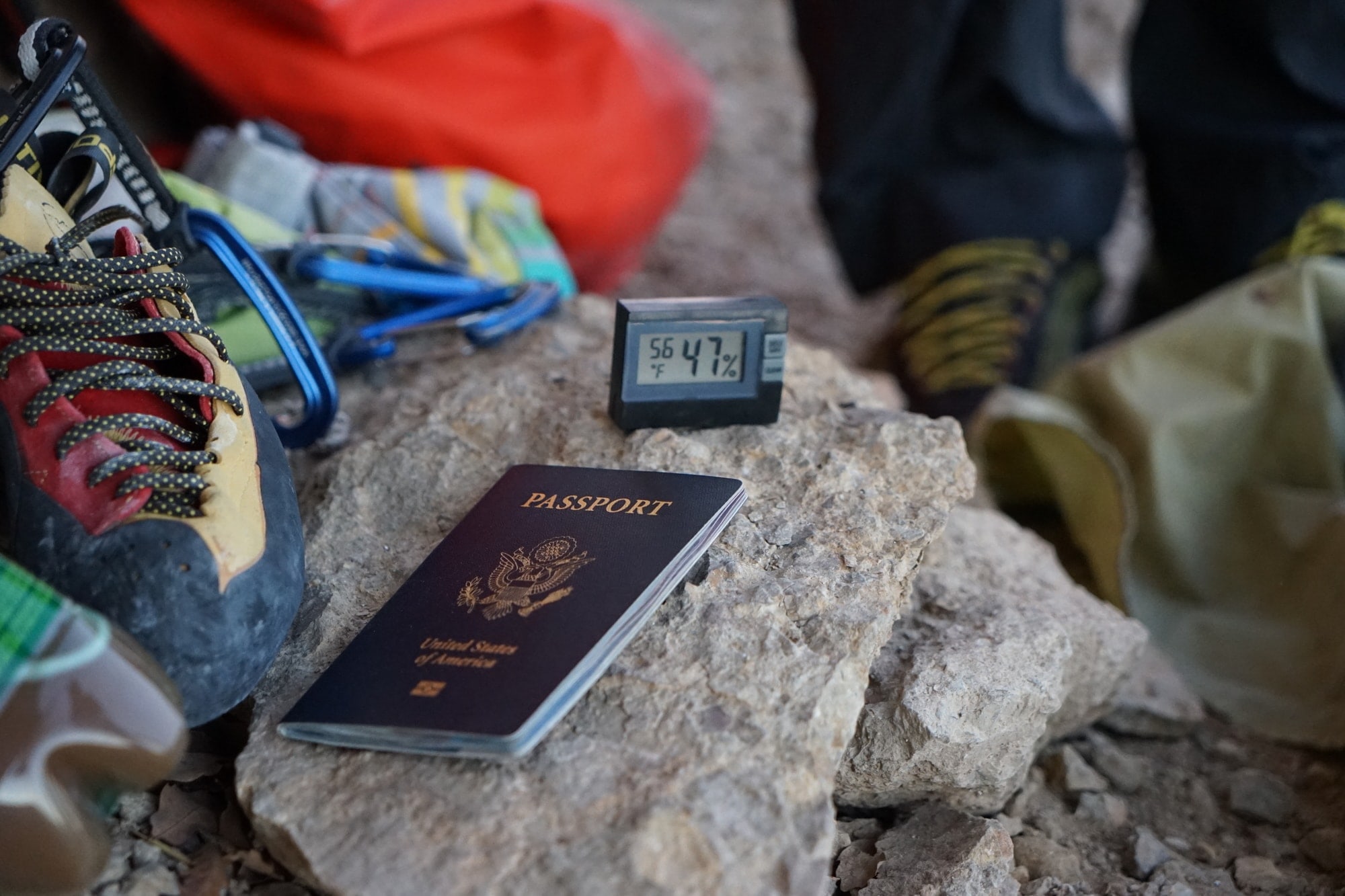
J-Star’s secret tool for projecting success.
Oh, and this nifty thing here is this dorky little device that I have several of, and really love to use. It basically just gives you a temperature and humidity reading, and I think more than anything it’s beneficial because you start to get an idea—between days of trying—what temperatures are best for you.
A lot of times you don’t really know because we’re just not as perceptive. It’s hard to be like, “it feels like it’s 55 out.” Instead, a lot of times you’ll be like, “it’s fucking hot!” but really, you’ll look at this thing, and see that it’s actually not hot.
So I find it to be cool because it helps me understand and quantify how conditions correlate with my performance. If I had a good try, it helps me know numerically what that means. From day to day it can help you know whether maybe it’s too hot to try, or that “oh man, I’m going to be really cold so I should bring an extra layer” or whatever.
It’s mostly me being a complete dork, but I actually find it really useful. And it’s tiny and fits in your bag, so whatever.
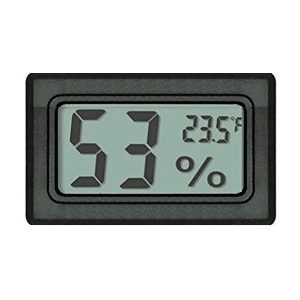
Given that you’re usually trying to climb up here when temps are cooler—and they drop pretty drastically at this cliff when the sun goes down—what do you wear to stay warm in between gos?
Well, this is my favorite belay parka. It’s an Arc’teryx Cerium SV with 850-fill down. It’s really simple but super, super warm and compressible.
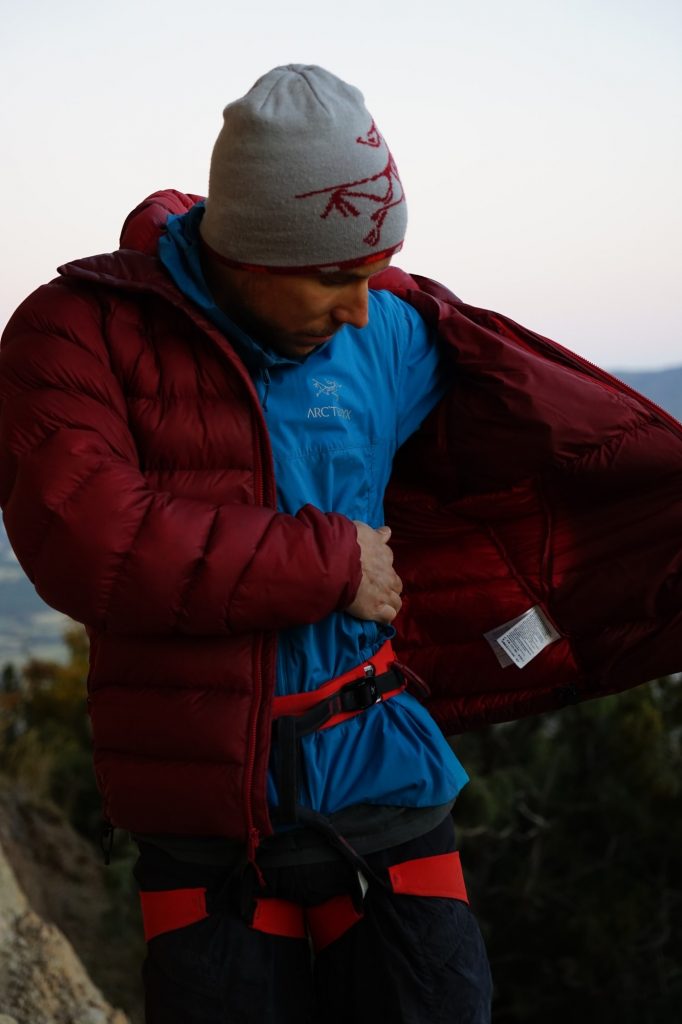
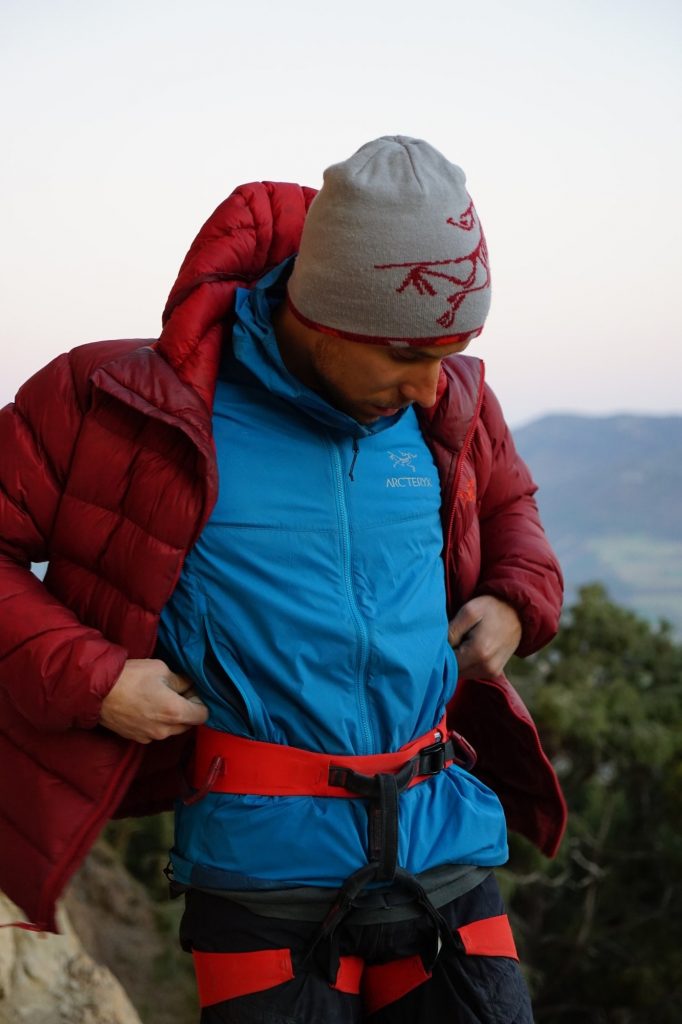
And then this is the Atom SL Hoody, which has Coreloft insulation in the chest, with thinner fabric on the arms, and perforated side panels to help you move around. I’ll occasionally climb in this if it’s super cold out, otherwise, I’ll use it as a second layer.
How about your approach shoes?
I wear the La Sportiva TX2s, and I’m really into these. They’re super flexible and really light duty. The top is almost like a slipper … they’re really soft. They also have this awesome Vibram dot rubber on the bottom, so I’ve actually climbed 5.11 in these, no problem.

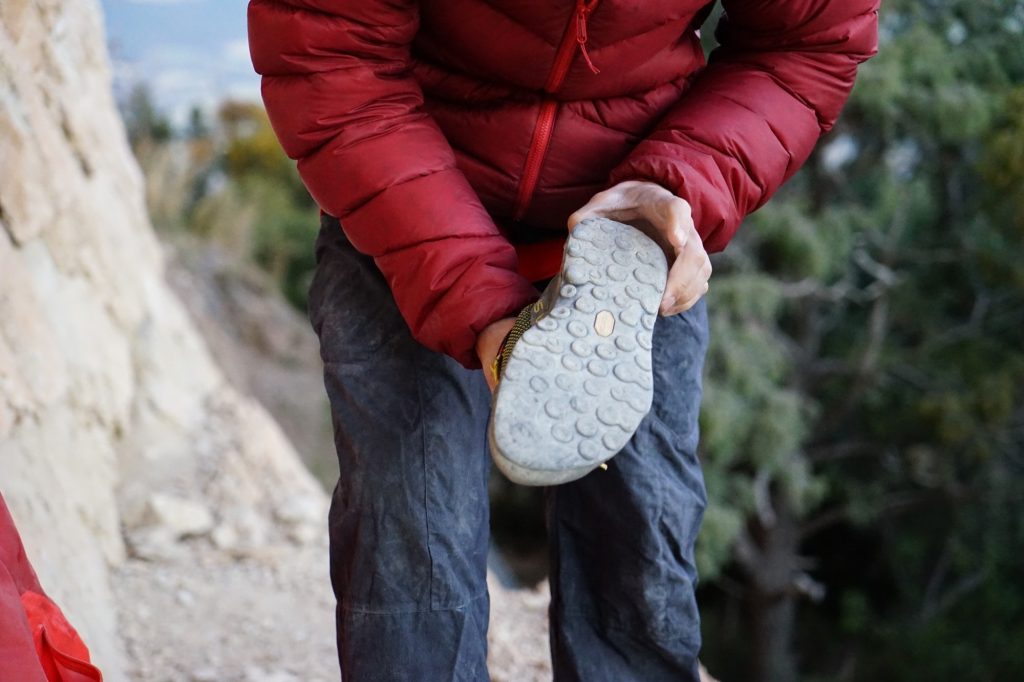
I also just like a shoe that I can slip on for the most part. For coming up to this cliff, jumping around on rocks, and having a shoe that I can easily slip on and off in between tries, they’re perfect. Patxi [Usobiago] is actually wearing the same ones over there and he loves them too.
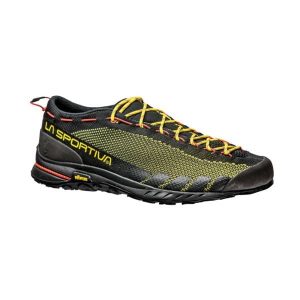
Okay, I’ve got to ask. What is this unsuspecting green bottle drink with a brown liquid that you carry around in your pack with you?
Well, that would just be a green bottle that used to be filled with water and now it has Vega Protein Powder mix in it. I really like it a lot … like I’m really into it. I’m vegetarian, not vegan, but I started using this stuff in place of water and have been diggin’ it. It’s the mocha flavor and it’s so good.
I’m really into this stuff actually, like in a weird way.
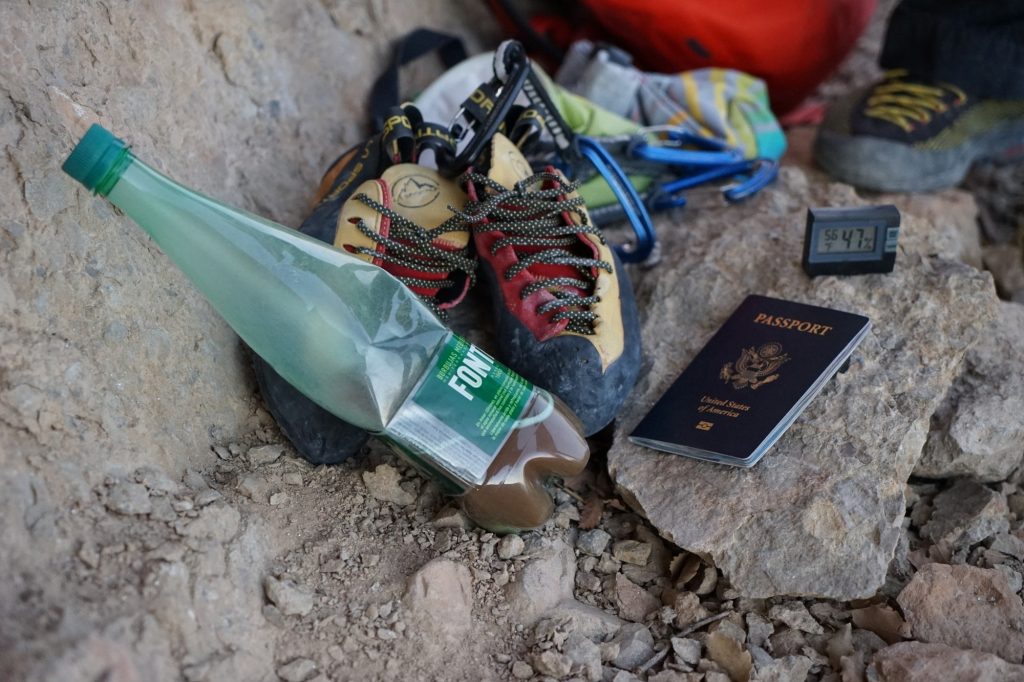
Strange brown liquid in green bottle. What is this?
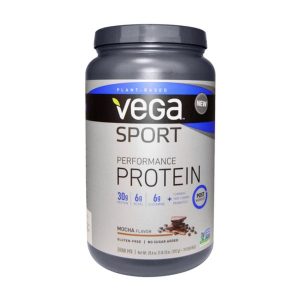
Tell us about your pack … what is all of this gear getting packed into?
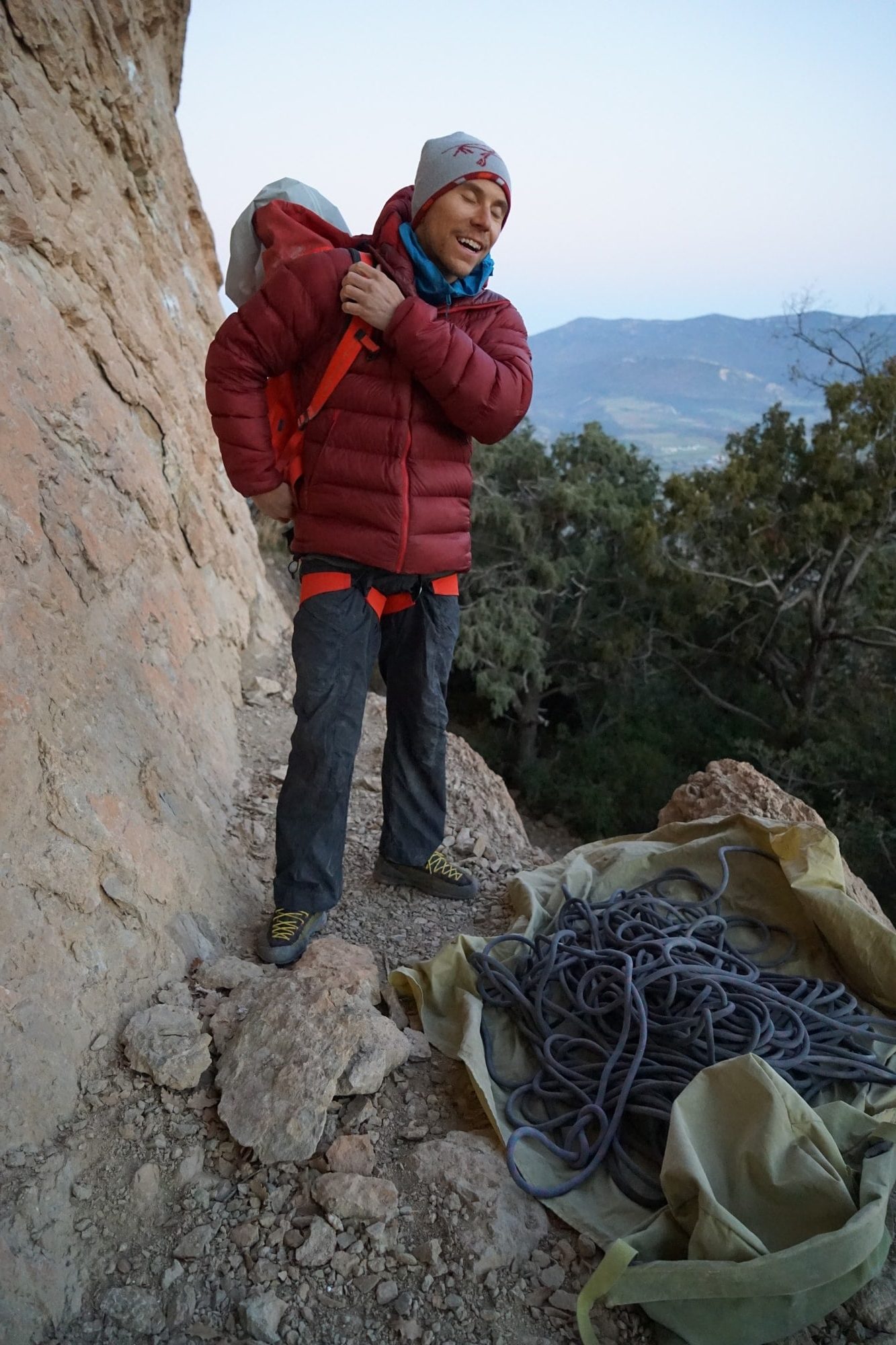 This pack is really designed for alpine climbing, but I like it because it’s just super simple. This is the Alpha FL 45, and they also make a 30 liter. It’s really simple: it has one zipper pouch and one interior pouch that’s big. It’s super, super lightweight, like it’s insane—it weighs nothing.
This pack is really designed for alpine climbing, but I like it because it’s just super simple. This is the Alpha FL 45, and they also make a 30 liter. It’s really simple: it has one zipper pouch and one interior pouch that’s big. It’s super, super lightweight, like it’s insane—it weighs nothing.
It’s almost like a haul bag, and for me, for this kind of day, when you have like a 30-minute or less approach, and you’re just dumping your stuff in there and planning on moving to the crag and taking everything out again, this makes sense for me.
And it’s really durable and waterproof, so on the rare day that we might be walking in the rain, I know I can cinch it up tight and keep my stuff dry.
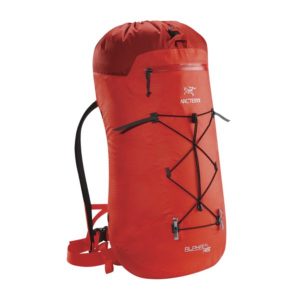
Well, I know you’re ready to give this route another burn, so just one last question. Looking beyond sport climbing projects like this one, what’s next?
I’m going to dedicate the next year or two to finishing some sport climbing projects. There are a few things specifically in mind that I want to do, including some development.
After that, I’m really keen to do more wall climbing, big wall stuff, and multi-pitch routes both in Europe, the US, and elsewhere internationally. That’s kind of where my enthusiasm is going towards. While the effort involved—logistically and everything—is more extreme, the reward is also more gratifying.
That being said, if I send this route, I’m going to be super fucking happy.
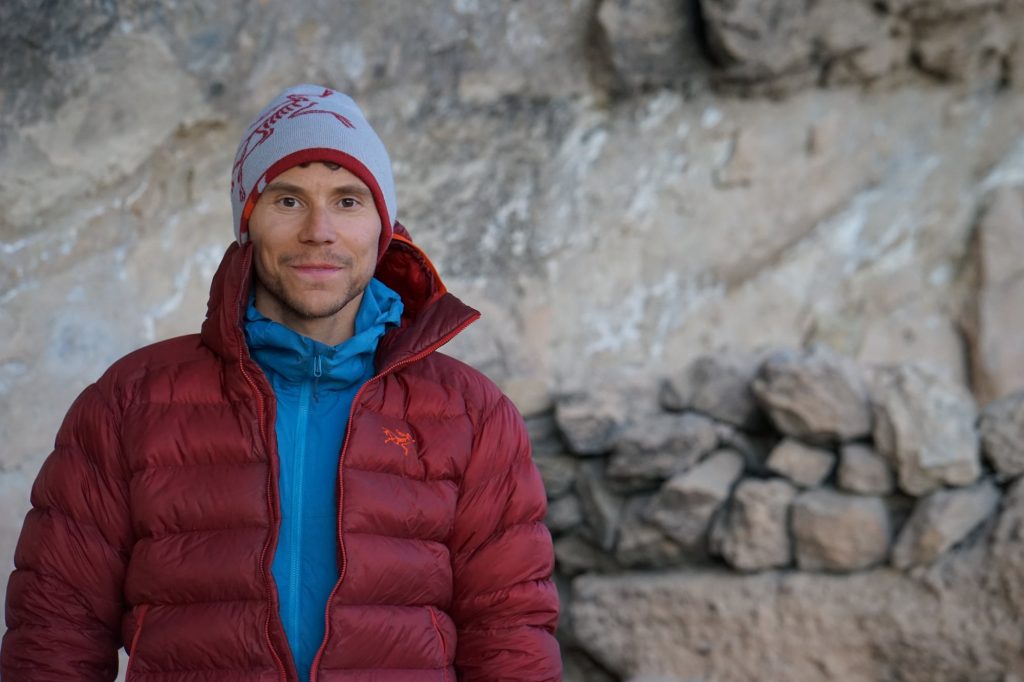
Want more climbing content? Get our awesome climbing newsletter, delivered weekly.
Explore more
- This week’s best rock climbing gear deals
- Our 30+ most popular articles ever
- What’s In Your Pack: Peter Croft on Gear and Alpine Efficiency
- What’s In Your Pack: Ethan Pringle
- How to Breathe Properly for Climbing
- Gear Guide: Sport Climbing Essentials
- Video: Jonathan Siegrist Projecting Power Inverter (9a+)
- Jonathan Siegrist Demonstrates How to Best Warm Up for Climbing
- Get daily updates by Liking us on Facebook
- Free rock climbing PDFs on technique, training, knots, and more


